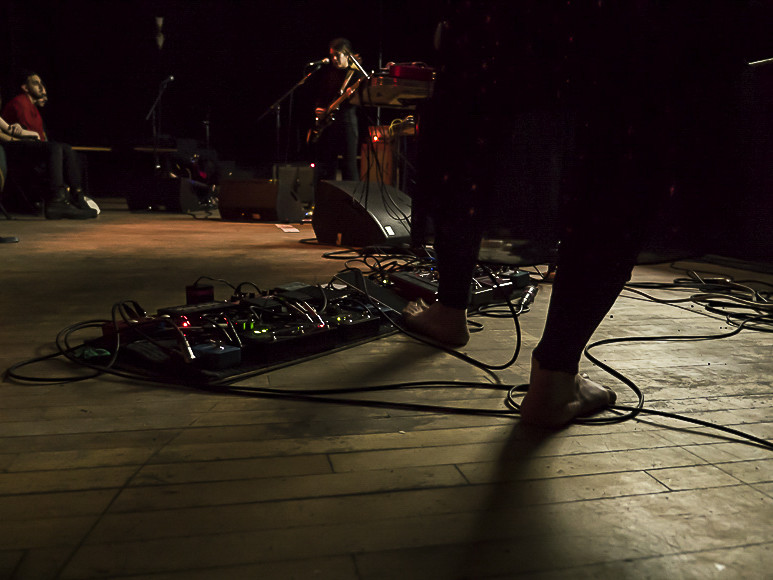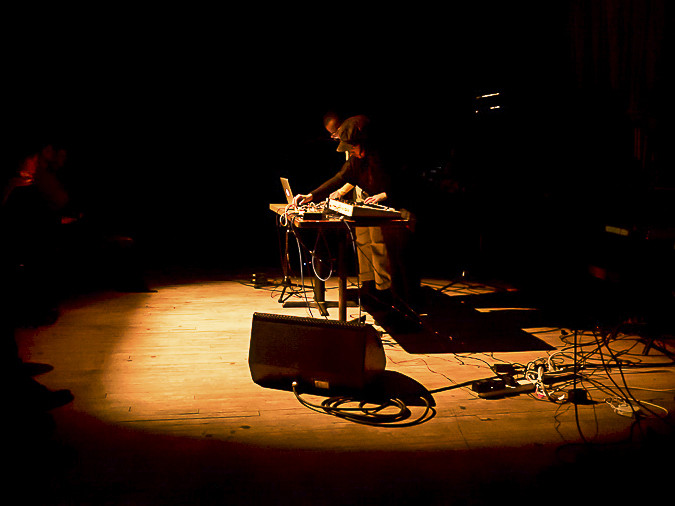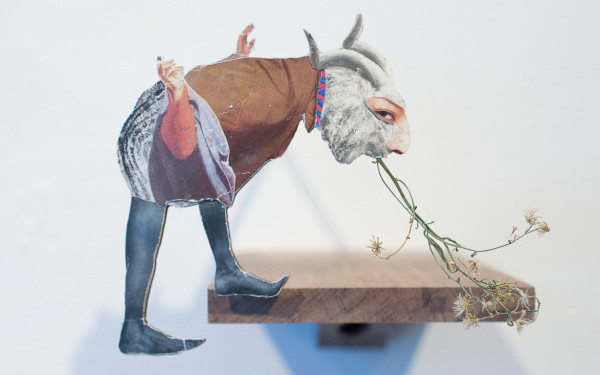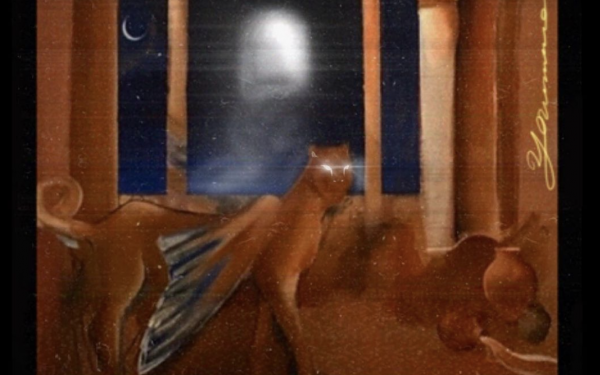Festival Review: Lux Magna Brightens Up Montreal’s Art Scene
The First Edition Inspires and Brightens the Winter Season
Over the course of the past weekend, I danced, I sang, and I was moved. I walked home feeling both rejuvenated and inspired to be creative.
From Jan. 25 to the 28, the local art community joined together to celebrate their work for the first edition of the Lux Magna festival.
“We came together to do something fun and uplifting, and positive during the winter,” said Ora Cogan, one of the festival’s organisers. She added that the festival’s aim is “to uplift and connect artists we feel deserve attention in Montreal. And to create a multifaceted and positive safe space.”
Multiple events happened simultaneously, and I chose to begin my Lux Magna experience by visiting the vernissage of the visual artist Cedar-Eve Peters at Casa Del Popolo.
The venue, affectionately known as the casa, was warm and the dimmed lights created an intimate environment. The imposing bar served as the epicentre of the space.
Peters’ paintings stood out as they rested against the walls.
“I hope to communicate that Native culture is still well and alive and that we’re here and thriving,” said Peters. “I think art is a really good way of communicating stories that were lost.”
“Sometimes, I guess, I don’t really want to show the titles [of the paintings] because then I feel people will read into it too much,” said Peters. “For me it’s more interesting to have a conversation to see what they see in it.”
An area was set up for Peters to showcase and sell her jewelry, fabric bags, and clothing. Curious people assembled around the plentiful-looking table and tried on various pieces until they left with the one that felt just right. Peters’ jewelry especially captivated me, colorful and intricate—bits of joy amid the grey of winter, embodying idea behind the Lux Magna festival.
“Native art can be any kind of art,” stated Peters. “I’m an artist first and foremost. My culture inspires what I do, but I’m not doing it to promote the culture. In that way, it can be unsettling for some people if they have a boxed view of what Native art should be.”
Cogan’s hope for the festival is for “everyone to participate, to make it special, to make sure that we are all supporting each other.” She added that the festival is about “supporting young artists who are coming up in Montreal, creating a positive space that’s good for cultivating creativity in all its forms, from all walks of life.”
Jan. 26 – Battle of the Brass Bands
That evening La Sala Rossa was host to The Urban Science Brass Band and The Van Hornies, both from Montreal, who performed alongside their Toronto counterpart, T.Dot BANGERZ Brass.
To say that the bands gave an explosive and delirious show would be an understatement. The party on Friday night was pure distilled fun, and I left with the feeling of having experienced a retroactive win for my high-school belief that brass instruments were, indeed, cool. This show was tailored to my taste, since the combination of hip-hop and jazz instruments has always been irresistible to me.
The merging of rap and brass sounds made for a fresh and exciting show, where the best elements of both worlds collided into a creative explosion. The evident skillfulness of the artists allowed for total freedom on stage, which wove an electric relationship between performers and audience.
One of the Van Hornies’ original members, Joseph Monier, had poste a call out for musicians on Kijiji to form a band. From there the group grew to become eclectic and multicultural—members are from France, Canada, the United States, Iran, and Spain.
“I think the delivery of the message is more powerful than the message specifically. In some ways, it’s more of a playful demonstration of virtuosity,” said Vincent Stephen-Ong, the leader of the Urban Science Brass Band.
A common theme among all three of the bands is the desire to foster a participatory and immersive experience for the audience. From the start, there was a motivation to stir the public into action.
“Toronto is world stage for hip-hop these days, but when you actually are in the city there’s not much hip-hop culture in downtown Toronto,” said Chris Weatherstone, one of the founders of T.Dot BANGERZ Brass. “So we decided to use the tried and true method of hitting the streets to bring an organic cultural experience to downtown Toronto.”
Meanwhile, the Urban Science Brass Band also took to the streets in Montreal. They started doing “public space invasions” where they would go into metro stations or on Ste. Catherine St. and play their music there. They would move from place to place and showcase their sound.
“It brings back to the origins of hip-hop, where it’s like a block party, and people having fun. There’s kind of, built into hip-hop, there’s always the giving voice to the voiceless thing, and that’s definitely a part of it, it’s a very culturally diverse band,” Stephen-Ong said.

“We also discovered there was a large amount of segregation in the arts and music community,” explained Weatherstone. “So we found ourselves in the position of pushing these cultural boundaries in bars and clubs in Toronto, creating a new and occasionally uncomfortable experience for some people, seeing a racially integrated band on stage doing a type of music that is confrontational to the sort of delicate sensibilities of mainstream Canadian culture.”
The performances were completely wild. In addition to musicians and rappers, dancers also participated. On stage and off, we all jumped, sweated and screamed. We were all in.
“The thing is we’re doing Black music,” concluded Stephen-Ong, “We think it’s fucking awesome, it’s the greatest music ever, that’s what we’re playing. Recognize where it comes [from].”
Jan. 28 – Rise: A Performance Night for Black Women and Femme Folks
I was back at Casa Del Popolo for this event which also served as a fundraiser for the Third Eye Collective, an organization that does vital work for healing and for the eradication of gender-based and sexual violence against Black women.
The evening started with a territorial acknowledgment, leading us into a moving and affirming celebration of Black identity. A lineup of masterful artists performed rap, and spoken word poetry.
The first performer was Shades Lawrence, who rapped to powerful and delicately crafted beats. While skilled with words, her sense of musicality and timing were also remarkable. It’s safe to say that I will follow her career closely, and am excited to hear what she else she has to offer.
Several other poets stepped up to the stage, each of them portraying strength, passion, and intimacy behind their words. Unyque N. Ether Karine, Constant-Déjean, and Jodie-Ann, all delivered powerful performances that showed their strong command of written and spoken poetry.
Shanice Nicole wrapped-up the evening with an exhilarating performance of spoken word poetry. Nicole’s delivery was masterful, simultaneously strong and airy, revealing poetry that is layered and deep. The audience moved with Nicole, she captivated our hearts with her passionate words, from pain to laughter.
Cogan concluded that she hopes for “people to walk away feeling inspired and excited and hopefully collaborating., making something special happen in these very troubled times.”


_600_832_s.png)


1_600_375_90_s_c1.jpg)

